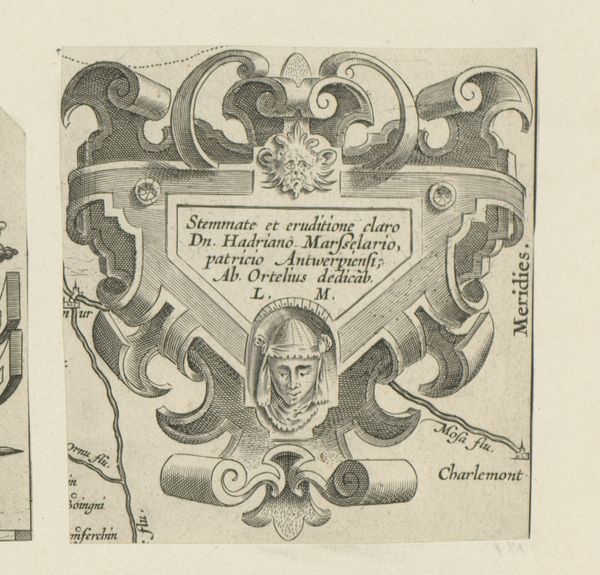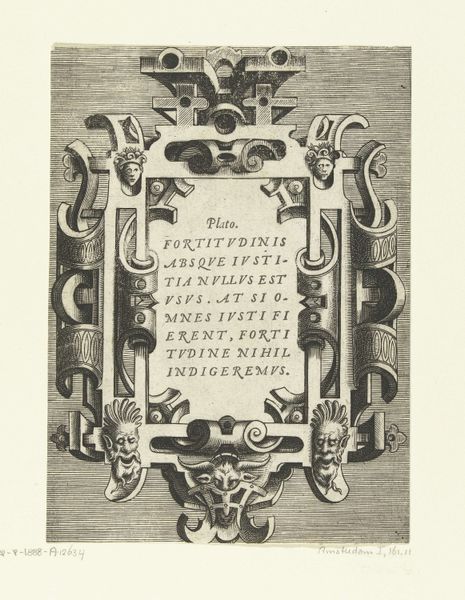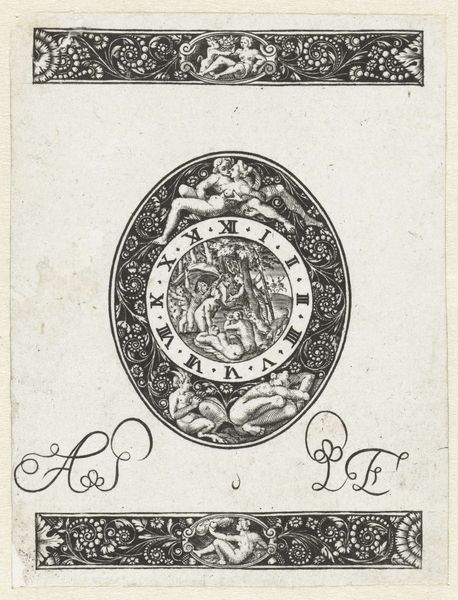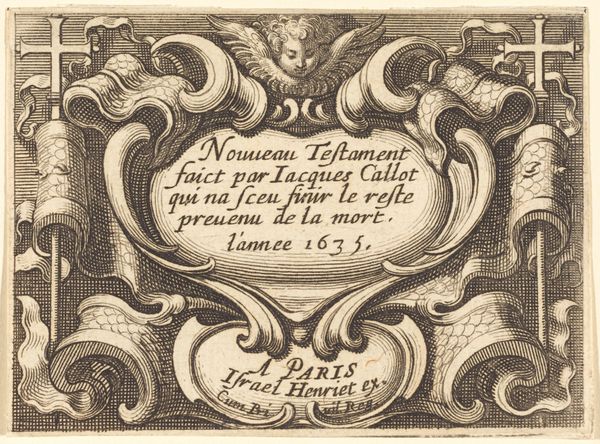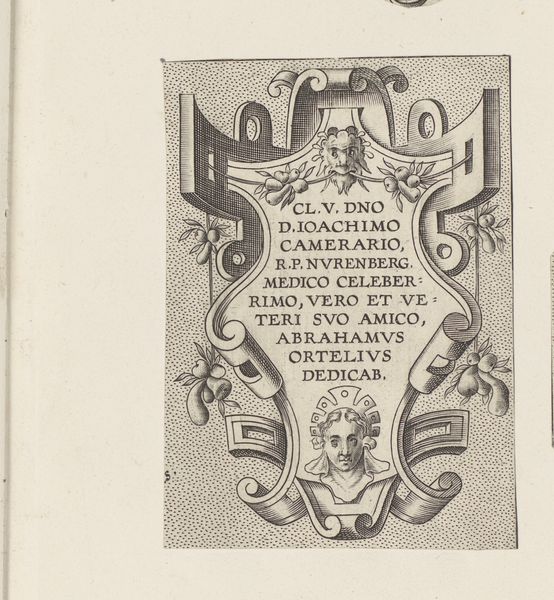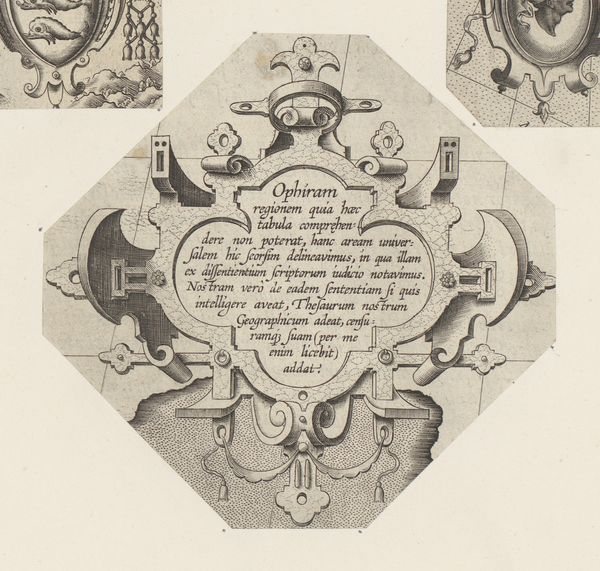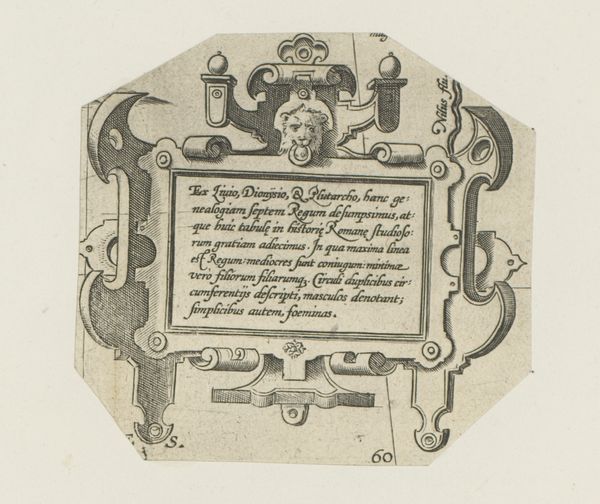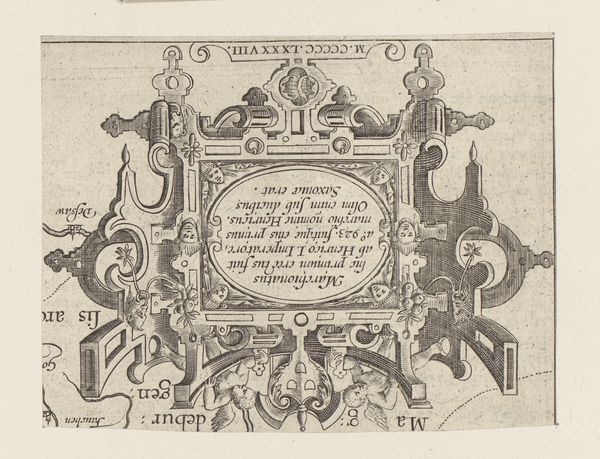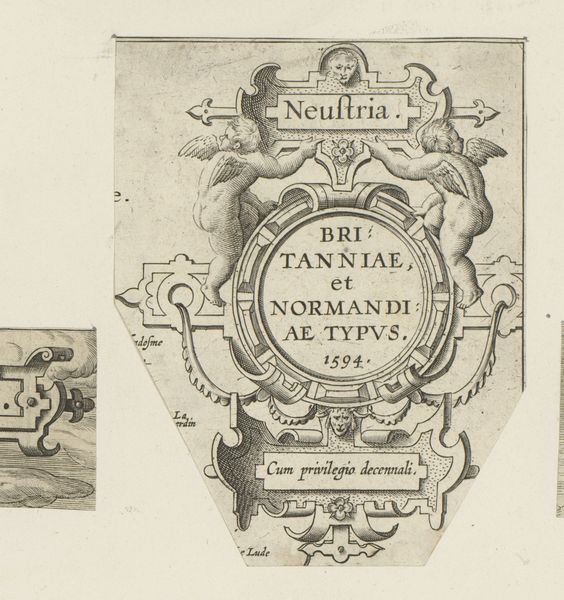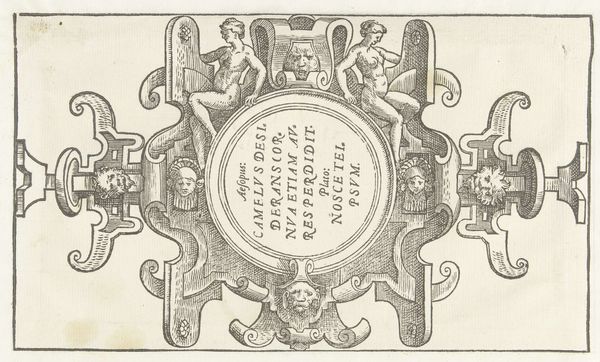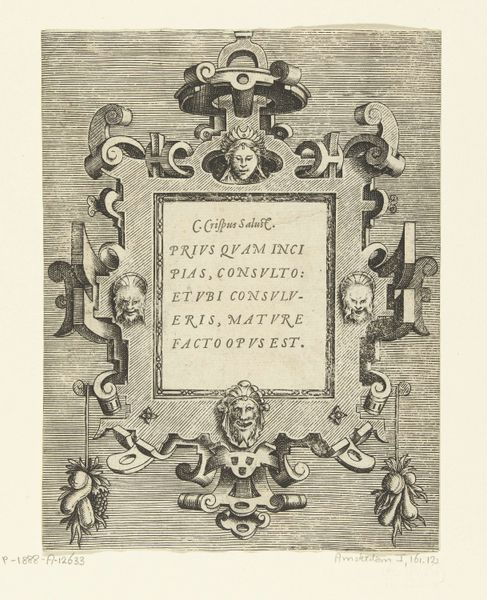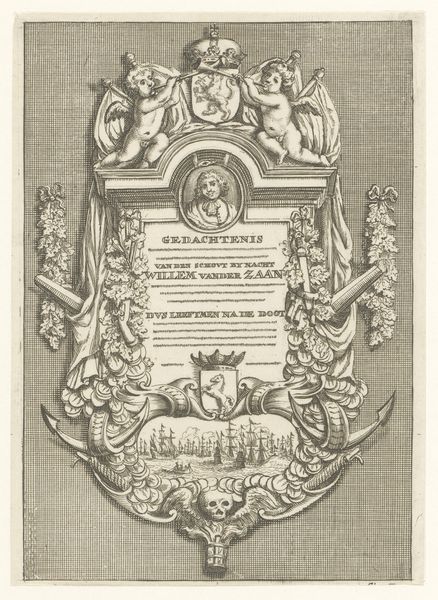
graphic-art, ornament, print, engraving
#
graphic-art
#
ornament
# print
#
11_renaissance
#
geometric
#
northern-renaissance
#
engraving
Dimensions: height 151 mm, width 120 mm
Copyright: Rijks Museum: Open Domain
Editor: We're looking at "Cartouche with Masks of Men and Women", an engraving from 1579, currently at the Rijksmuseum. I'm struck by how this relatively small print is brimming with detail and how those grotesque faces really frame the text. What do you see in this piece beyond its ornamental value? Curator: The "grotesque" element, as you called it, is crucial. Remember, during the Renaissance, ornament wasn't just decoration. These masks, the cartouche itself—they participate in a visual language tied to power and knowledge. This print isn't simply about aesthetic pleasure, it's about status. It also mimics ancient Roman designs of victory columns and triumphal arches that also showed male and female masks. Editor: Status how? Who was this made for, and what would they use it for? Curator: Consider the inscription itself: a dedication concerning the County of Hainaut. The print probably functioned as a bookplate or an illustration in a cartographical work, something that signaled the importance of the region, or perhaps, more specifically, the patron's connection to it. These early maps weren't seen just as accurate depictions, they symbolized civic pride. Editor: So the embellishment advertises status and importance. Would a more straightforward map have been perceived as...less authoritative? Curator: Precisely. The politics of imagery in the 16th century were carefully orchestrated. The intricate detail and inclusion of classically-inspired ornament legitimized the map, and the cartographer, Iacobo Surhonio Montano as knowledgeable and trustworthy, it connected them to an intellectual tradition reaching back to antiquity. Editor: It's interesting how something that feels so decorative actually had a very specific socio-political function. I always thought they were added just for aesthetics. Curator: These kinds of artworks make it obvious just how loaded these designs can be with historic symbolism. These elements show how cultural items were essential in an artist's approach. Editor: Thanks. That certainly gives me a richer appreciation for the print.
Comments
No comments
Be the first to comment and join the conversation on the ultimate creative platform.
